Content Analysis in Psychology
Concept Map
Content analysis in psychological research is a method for systematically analyzing qualitative data, such as interviews and diaries, to identify and quantify patterns and themes. This process involves preparing data, defining analysis units, coding, and statistical analysis to test hypotheses and understand trends in human thought and behavior. It's a tool that balances systematic quantification with the richness of qualitative insights.
Summary
Outline
Exploring Content Analysis in Psychological Studies
Content analysis is a research tool used in psychology to systematically analyze qualitative material by identifying and quantifying patterns, themes, or concepts. This method transforms descriptive data into numerical values, enabling statistical analysis and helping researchers to test hypotheses and discern underlying trends in human thought and behavior. It is a meticulous process that requires careful planning and execution to ensure that the data's richness is not lost in translation to quantitative form.The Methodical Stages of Content Analysis
The content analysis procedure is composed of several distinct steps. Initially, researchers must prepare the qualitative data, which may include transcribing spoken words or organizing written material. The next phase involves defining the units of analysis—such as specific words, phrases, or themes—and developing a coding scheme to systematically identify these units within the data. A pilot test of the coding scheme is conducted to verify its reliability and validity. Once the data is fully coded, researchers assess the consistency of the coding application before proceeding to statistical analysis, which ultimately informs the conclusions drawn about the research question.Diverse Qualitative Data Sources in Content Analysis
A wide array of qualitative data types can be subjected to content analysis in psychological research. These include, but are not limited to, interviews, observational notes, speeches, personal diaries, and correspondence. The flexibility of content analysis as a method allows researchers to apply it to diverse data sets, enabling the use of statistical techniques to analyze and interpret the findings, which is not feasible with purely qualitative approaches.Crafting a Coding System and Ensuring Its Reliability
The cornerstone of content analysis is the creation of a robust coding system. Researchers must identify relevant themes that align with their research objectives and decide on the specific elements to be coded. These elements then serve as the variables for analysis. The coding system is applied to the data to quantify the presence of these elements. To guarantee the reliability of the coding system, it is crucial to have multiple coders independently apply the system to the data and to compare the results for consistency.Content Analysis in Practice: A Research Example
To illustrate content analysis in action, consider a study examining the impact of adoption on children's aggression and loneliness. Researchers would transcribe interviews with adopted children, coding for expressions of loneliness or aggressive behavior. The coding system would be tested and refined using a subset of the data before being applied to the entire dataset. An independent coder would also analyze the data to ensure coding reliability. The quantified data would then be subjected to statistical tests, such as an independent t-test, to compare the experiences of adopted versus non-adopted children, culminating in the interpretation and reporting of the study's findings.Advantages and Limitations of Content Analysis
Content analysis is advantageous for its ability to systematically convert qualitative data into a format that is amenable to comparison and trend analysis. The standardized nature of the method can yield highly reliable results, particularly when coding is performed by multiple observers. It is also a cost-effective approach. Nonetheless, the method has limitations, including the potential for important data to be overlooked if it does not fit the predefined coding categories. The subjective nature of coding can introduce bias, and the abstraction of data into numerical form may result in the loss of nuanced context, which could lead to misinterpretation.Content Analysis Compared to Thematic Analysis
Content analysis is often contrasted with thematic analysis, another qualitative research technique. While content analysis quantifies the frequency of predefined themes or concepts, thematic analysis remains qualitative, focusing on identifying, analyzing, and reporting patterns within the data. The choice between the two methods hinges on the research goals and the nature of the data, with content analysis being more suitable for studies aiming to quantify aspects of the data and thematic analysis for those seeking a deeper, more nuanced understanding of the data's content.Concluding Thoughts on Content Analysis
In conclusion, content analysis is a valuable observational method in psychological research for quantifying themes within qualitative data. It involves a structured process from data preparation to coding and statistical evaluation, which facilitates hypothesis testing. While it offers the benefits of comparability and potential reliability, researchers must remain vigilant of its shortcomings, such as the possibility of bias and loss of context. Content analysis is one of several analytical tools available to researchers, and its application should be judiciously considered in light of the study's objectives and the characteristics of the data.Show More
Definition and Purpose
Research Tool
Content analysis is a research tool used in psychology to systematically analyze qualitative material
Identifying and Quantifying Patterns
Content analysis helps researchers to identify and quantify patterns, themes, or concepts in qualitative data
Transforming Data into Numerical Values
This method transforms descriptive data into numerical values, enabling statistical analysis and testing of hypotheses
Process and Steps
Preparation of Qualitative Data
The first step in content analysis is preparing the qualitative data, which may include transcribing or organizing material
Defining Units of Analysis and Coding Scheme
Researchers must define the units of analysis and develop a coding scheme to systematically identify them within the data
Pilot Testing and Coding Consistency
Before statistical analysis, a pilot test is conducted to verify the reliability and validity of the coding scheme and assess coding consistency
Types of Qualitative Data
Interviews and Observational Notes
Content analysis can be applied to various types of qualitative data, including interviews and observational notes
Flexibility and Statistical Techniques
The flexibility of content analysis allows for the use of statistical techniques to analyze and interpret findings from diverse data sets
Creation of a Coding System
The cornerstone of content analysis is the creation of a robust coding system to identify relevant themes and serve as variables for analysis
Advantages and Limitations
Systematic and Cost-Effective
Content analysis offers the benefits of systematic conversion of data and cost-effectiveness in research
Potential for Bias and Loss of Context
However, researchers must be aware of the potential for bias and loss of context in the coding process
Comparison with Thematic Analysis
Content analysis is often contrasted with thematic analysis, with the former being more suitable for quantifying data and the latter for deeper understanding





